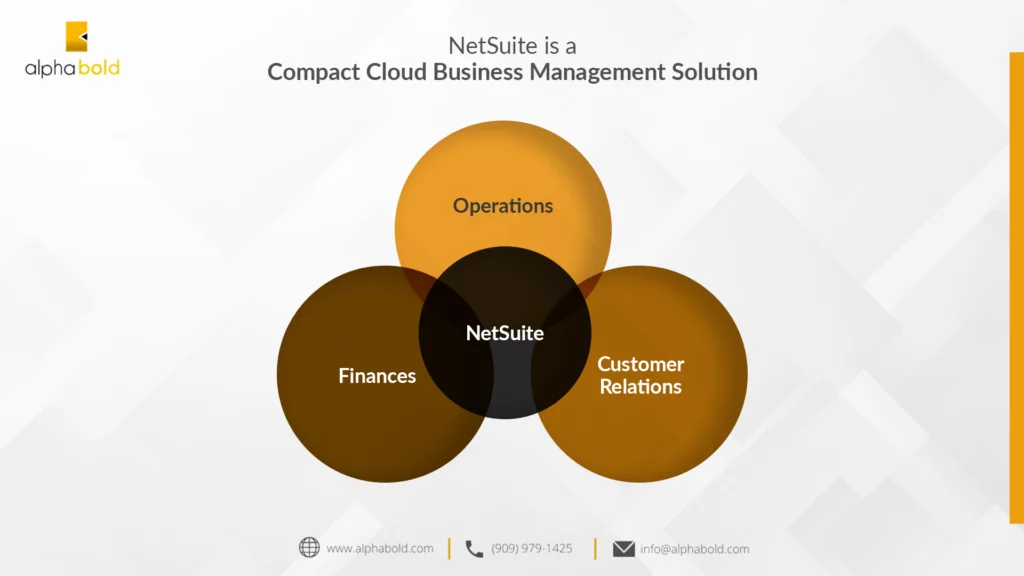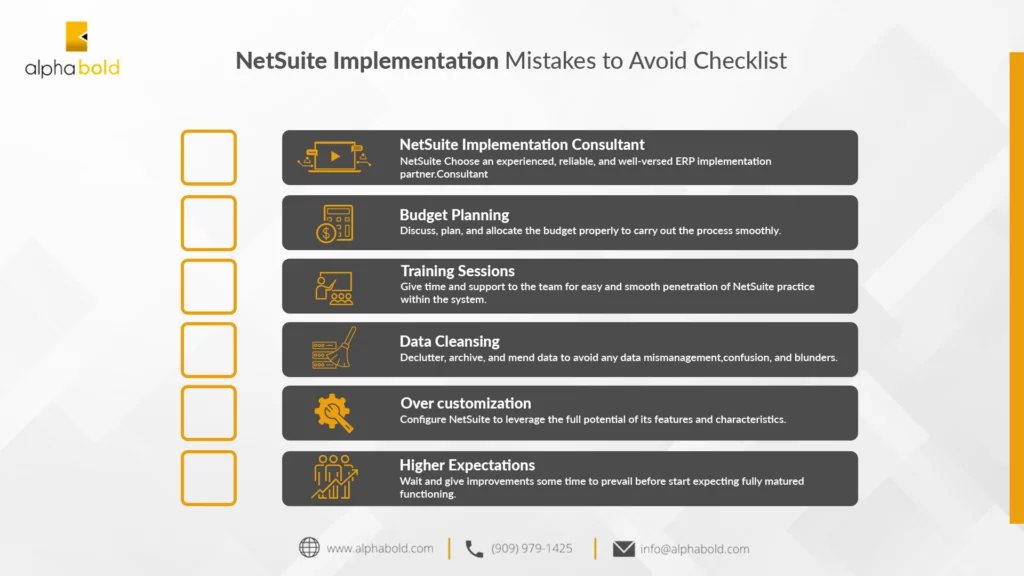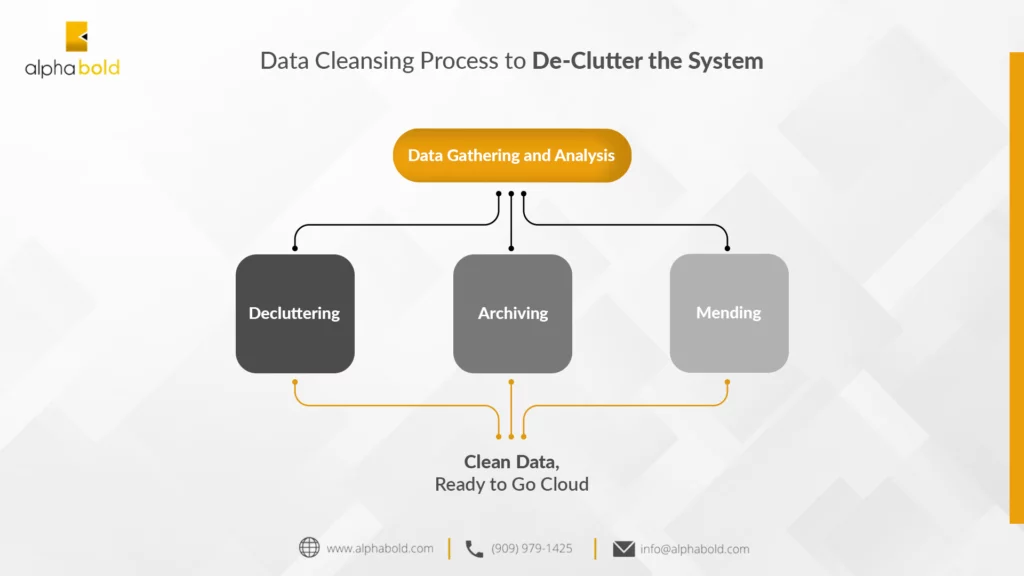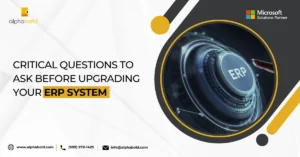Introduction
Question: Is it important to know about the right way of NetSuite implementation?
Answer: Yes!
This blog is going to talk about exactly that:
- Why is it important to know about the perfect NetSuite implementation process?
- What are the possible NetSuite implementation mistakes?
- How can you avoid these common mistakes to get the desired results?
Without any further ado, let’s begin!
Surviving in today’s dynamic, fast-paced, and evolving business landscape is hard if you stick with outdated and costly processes, reducing productivity. That’s where NetSuite – the principal cloud business management software – is emerging as the savior of businesses looking to manage business operations, finances, and customer relations efficiently and effectively.

Yes, you heard it right! NetSuite can ease out all these diverse business pain points. To be more precise, NetSuite can help you address these challenges:
- Hurdles in accessing real-time information produced by reports.
- Increased operational costs due to unsystematic business processes.
- Poor user experience followed by the lower user adoption rate.
- Delayed manual marketing, reporting, and invoicing processes.
- Unreported and miss calculated operational and financial issues. …
and the list goes on!
Further Reading: Don’t know what are the most crucial manufacturing ERP features?
So, does it mean that everything is bliss and glee in the world of NetSuite development? You buy NetSuite software, make it part of your system, and then your business management becomes happily ever after – right? Well, no! Whether the custom NetSuite development process becomes a hit or miss case depends on the NetSuite ERP implementation process.
NetSuite is not just software but a whole SUITE, with many
- Functionalities
- Features
- Capabilities
…all of them need to be properly configured and integrated to get the best out of it. You can end up facing some really costly consequences if NetSuite ERP software implementation isn’t carried out properly.
SOLUTION: Proper, effective, and planned NetSuite implementation is the way to go!
Check out: Webinar Blog: Top 5 Critical Manufacturing ERP Features to know the answer.
Here are some common NetSuite software implementation mistakes, the reasons why ERP implementations fail, you should avoid if you don’t want to face unwanted hang-ups and be stopped dead in your tracks:

Avoid Common Pitfalls in NetSuite Implementation
Ready to ensure your NetSuite implementation is seamless and free from common mistakes? Contact AlphaBOLD today to leverage our expert NetSuite implementation services. Let us guide you towards a successful deployment with ease.
Request a Demo1. Selecting an Incapable NetSuite Implementation Partner
The selection of the NetSuite ERP partner is the first step towards the road to a smooth NetSuite implementation without any bumps. Selecting a partner who knows the ins and outs of NetSuite and what goes into making the whole process successful defines whether you would be able to reap the benefits or… not!
Here are a few key factors to consider while choosing the right implementation partner:
1. Experience Working in Your Industry:
No two industries work on the same principle, and the ERP implementation requirements are different for different industries. Choose a NetSuite developer who has experience working with different industry verticals – significantly, yours.
2. Continuous Support & After Sales Services:
NetSuite isn’t a once-in-a-lifetime project and requires continuous support for the continuity and better execution of the improvement and maintenance phase. So, find a partner who is ready to be with you after the implementation phase as well.
3. Robust Process and Methodology:
The implementation process is a science, not an art; it needs a proper methodology for the perfect execution. Check out the workflow of the selected NetSuite implementation partner to leverage the benefits.
4. In-Depth Knowledge of Features:
As already discussed, NetSuite is a software suite with many characteristics, and it’s hard to get a grasp on all its aspects. But that’s what you need! Select a knowledgeable partner having a full understanding of the different features of NetSuite. So, don’t hire the very first NetSuite implementation genius (as per the claims!) you encounter. Take your time to analyze things, ask for recommendations, and check out these factors for further help:
- Online reviews
- Clientele
- Case studies
- Roadmap

User Handbook To Lead Successful Netsuite ERP Implementation
Discover everything you need to know about NetSuite pricing with our comprehensive user guide. Get started today!
Download Guide
2. Poor Budget Planning
NetSuite implementation can’t be successful with poor planning and budget allocation. It’s an ongoing process, and holding on to or giving all-in budget to a certain step will only cause unnecessary delays rather than doing any good.
Here are a few important budget planning steps:
- Have a meeting with your implementation partner to get an insight into resources and budget.
- Create a realistic budget plan after analyzing the situation and requirements.
- Start with the most important business aspect that you want ready, to begin with.
It’s a no-brainer that you will get what you have asked for. So, always be crystal clear about what you have in your pocket, where do you want to reach, and what you want to achieve from it. It minimizes the possibility of facing any lapse just because you ran out of money.
3. Lack of Training Sessions by Netsuite Implementation Partners
NetSuite’s clean and straightforward interface offers easy customer experience and usability, but still, integrating NetSuite into your business process requires time and training because it’s not going to work automatically.
Ultimately, it is your team that is going to use and operate software, and that’s only possible if it:
- Knows how to operate it.
- Has a knowledge of its different features.
- Is aware of how the new system is going to replace the old system.
- Doesn’t have any doubts and queries related to the system.
That’s where training sessions come in!
Many organizations fail to get the best out of the NetSuite implementation because they overlook this factor. Result? An unprepared team who is always looking for ways to switch to the old processes and practices.
So, always give enough time and support to your team to understand and engage with the system to ensure a smooth and successful transition.
AlphaBOLD: Your Partner to Successful NetSuite Implementation
Navigate the complexities of NetSuite implementation with AlphaBOLD. Our collebration means you avoid common errors and get the most out of your investment. Let's make your NetSuite journey a success.
Request a Demo4. Not Cleaning Data Before Hiring a Netsuite Developer
NetSuite is all about cloud business management in the form of data; no wonder that data lies at the forefront of the NetSuite implementation process! It goes without saying that unaligned, wrong, and incomplete data will not help to bring in the ultimate benefits of implementing NetSuite. So, cleanse data before stirring the implementation process.
Here is what to do:
- Dispose of any unnecessary data that you might not need again.
- Look out for any unarchived data that you need to tabulate beforehand.
- Any unamended data that might create confusion later.

Switching to a new system means that you don’t want to see old data management issues again, and you want everything to work in a smooth, better, and streamlined way. This is only possible if you don’t carry along jumbled-up, incomplete, and useless data.
Get rid of the data clutter to not utter any cry later!
5. Focusing on Over-Customization
Companies inevitably want to customize NetSuite according to their needs, workflow, and requirements. But over-optimization can become a stumbling block rather than helpful for the company. Tweaking a few things is a good idea, but replicating the legacy system can:
- Make the system slow and progress down for users.
- Lose the whole purpose of implementing the NetSuite system.
- Futile the key features of NetSuite.
That’s why the configuration is a better option during the initial phase, which is quite simple and smooth. However, you can customize the system after 5-6 months once you know how things work.
6. Having All-at-once Attitude
You are investing money, moving resources, so understandably, you want positive results as fast as you can. But cloud business management upgrade takes time to fully mature and integrate into your system. So, don’t expect overnight results! The implementation phase will execute things; the improvement phase will help fine-tune the system and take you down the road to the improvements you want to see.
So, don’t rush things; once you have NetSuite ERP in your hand, you are on the right track. It is just that things will take some time to fully mature as per your expectations, but that wait will be worth it!
That’s what we tell our clients at AlphaBOLD! We use a carefully crafted methodology to offer our clients fully tailored NetSuite implementation services that comply with their:
- Goals
- Unique requirements
- Nature of the business.
It takes time to achieve the end goals, but our right strategy moves the needle for our clients!
Further Reading: Want to know how can we help you? Dig out our BOLDRoute methodology here: BOLDRoute – ERP Implementation Methodology to see how we help our clients.
Final Thoughts
Now you know the good, bad, and worst of the NetSuite implementation, i.e., what to do and not to do to get the best outcomes. So, what are you waiting for? Let’s begin your journey towards successful NetSuite implementation to leverage maximum NetSuite benefits for a more organized, efficient, and streamlined business process.
Did we miss out on anything in this NetSuite implementation guide, or do you want to share a word or a few? Feel free to leave your comments – we are ready to hear from you!
NetSuite ERP floor is all yours!









